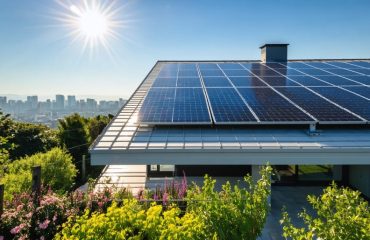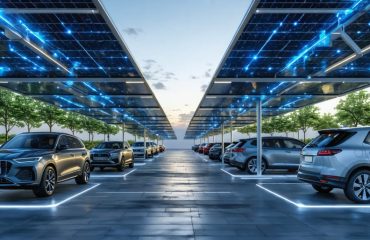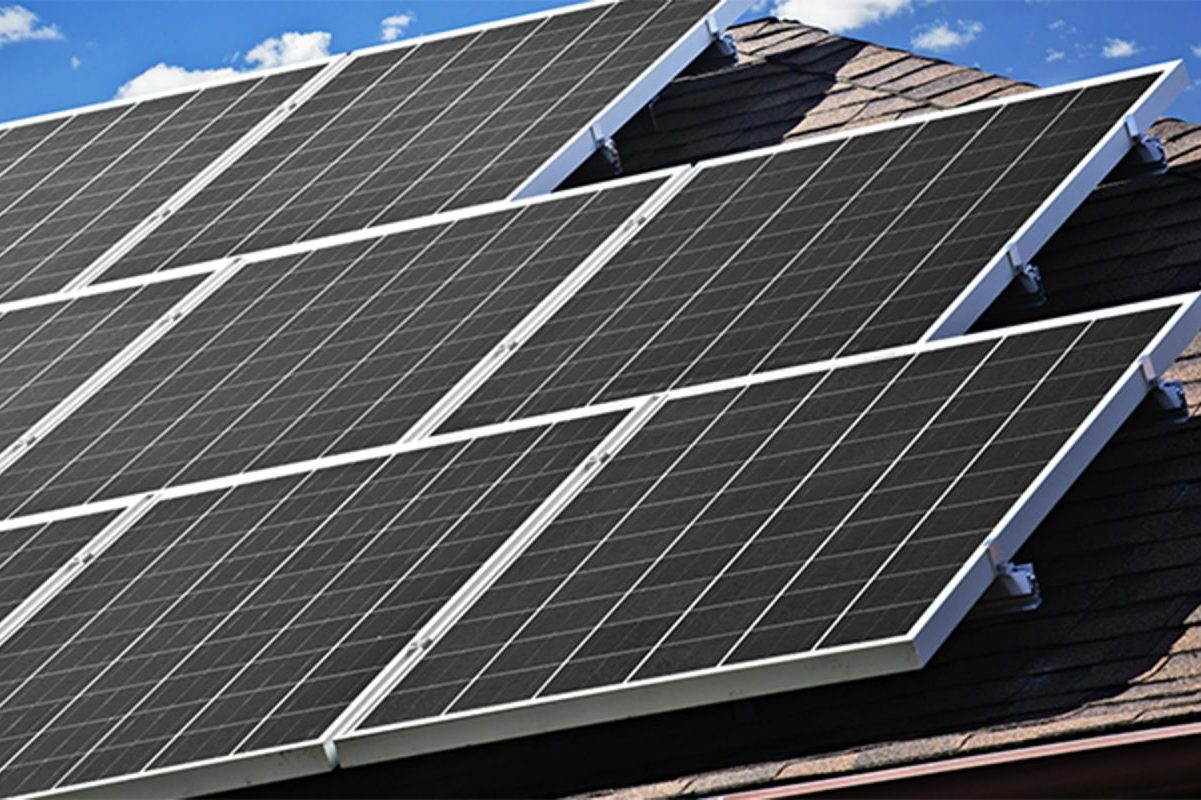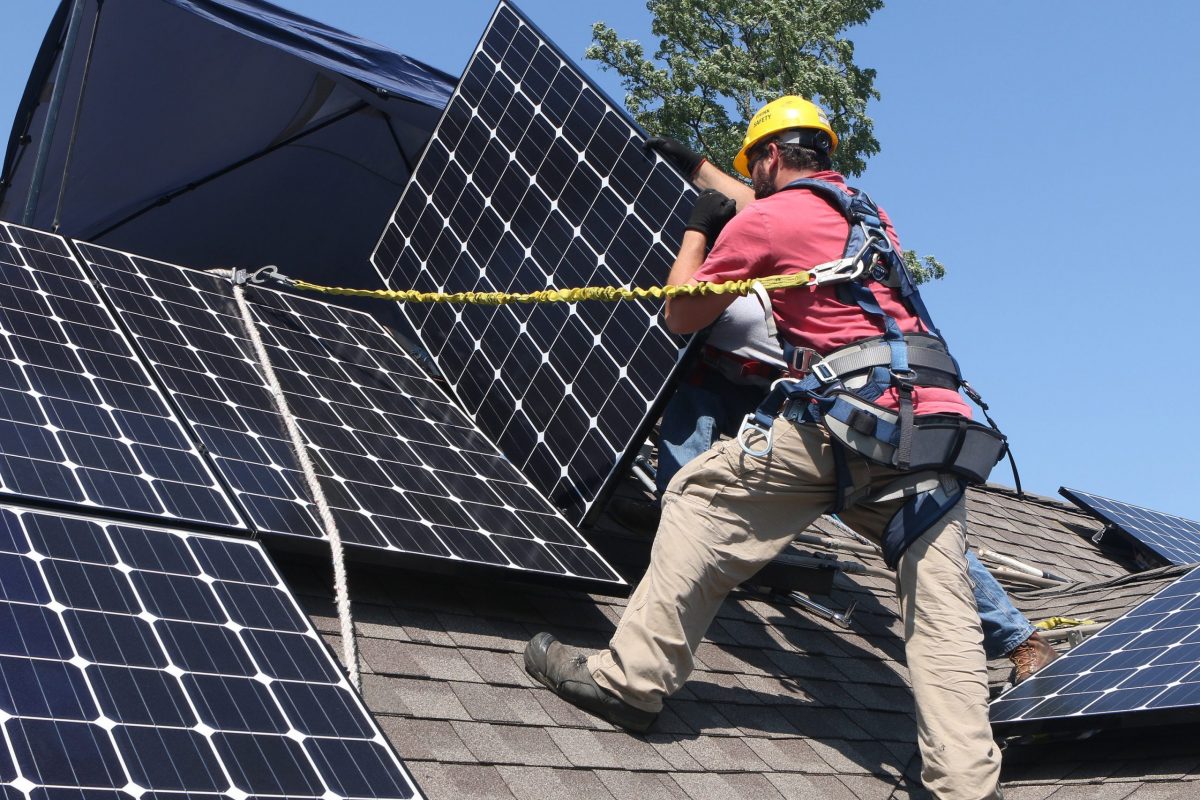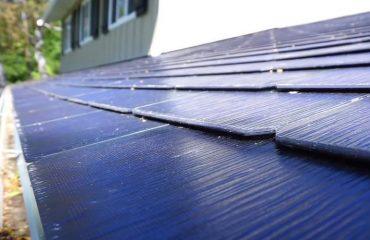Imagine your favorite shirt generating electricity while you wear it. This isn’t science fiction – it’s the revolutionary world of fabric solar cells, where everyday textiles transform into power-generating materials. These innovative solar collectors weave photovoltaic technology directly into fabric fibers, creating flexible, lightweight energy solutions that could revolutionize how we power our homes and personal devices.
Unlike traditional rigid solar panels, fabric solar cells integrate seamlessly into curtains, awnings, and clothing, turning previously passive surfaces into active energy generators. This breakthrough technology captures sunlight through microscopic solar collectors embedded within the fabric’s structure, maintaining the material’s flexibility and comfort while producing clean, renewable energy.
For homeowners seeking sustainable solutions, fabric solar cells represent a elegant bridge between everyday comfort and energy independence. As this technology rapidly advances, we’re approaching a future where the very fabric of our homes actively contributes to our energy needs, making solar power more accessible and aesthetically pleasing than ever before.
What Are Fabric Solar Cells?
The Science Behind Flexible Solar Technology
Fabric solar cells work through a remarkable combination of innovative materials and smart design. Think of them as ultra-thin sandwiches of special materials that can capture sunlight and convert it into electricity. The outer layer is made of flexible, transparent plastics that protect the inner workings while letting sunlight through. Underneath, there’s a layer of photovoltaic material – the real workhorse of the system – that absorbs sunlight and creates an electrical charge.
What makes these cells special is their ability to bend and flex without breaking, unlike traditional rigid solar panels. This flexibility comes from using organic materials and printing them in extremely thin layers, sometimes just a fraction of the width of a human hair. When sunlight hits these layers, it triggers a process called the photovoltaic effect, creating an electric current that can power devices or be stored in batteries.
The technology uses semiconducting polymers, which are essentially plastics that can conduct electricity, making them both lightweight and durable. This combination of materials allows the solar cells to be integrated into various fabrics while maintaining their power-generating capabilities.
Key Materials and Components
Fabric solar cells incorporate innovative materials that make them significantly different from the traditional solar panel manufacturing process. The key components include specialized polymer-based semiconductors, which are flexible and lightweight, replacing traditional silicon cells. These polymers are combined with conductive materials like silver nanowires or carbon nanotubes to create a mesh-like structure that can be woven into fabrics. A transparent protective layer ensures durability while maintaining flexibility. The materials are carefully selected to be non-toxic and environmentally friendly, making them safe for everyday use in clothing and home textiles. What makes these components truly remarkable is their ability to harvest solar energy while remaining as flexible and comfortable as regular fabric.
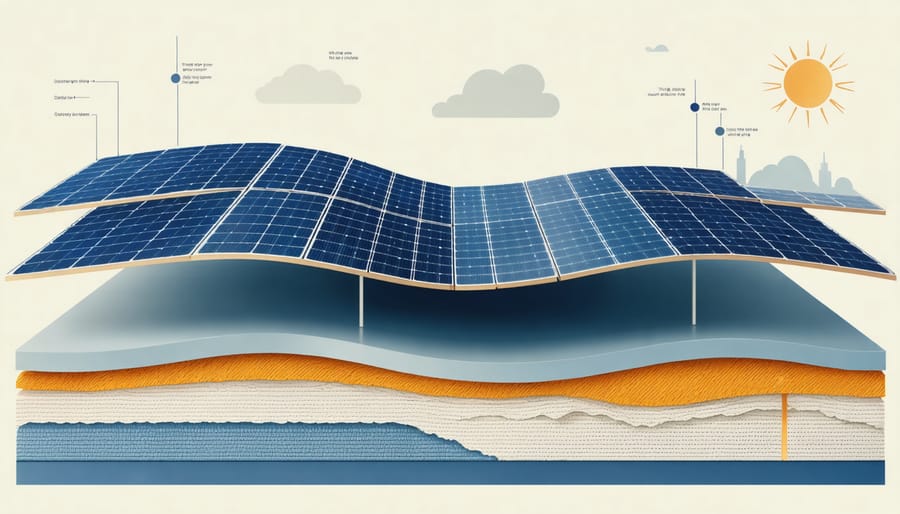
Benefits for Homeowners

Installation Flexibility
Fabric solar cells offer unprecedented installation flexibility, making it easier than ever to transform your home’s energy efficiency. Unlike traditional rigid panels, these innovative cells can be seamlessly integrated into various home surfaces, including curtains, awnings, and even wallpaper. Their lightweight and flexible nature allows them to conform to curved surfaces and irregular shapes, opening up new possibilities for solar energy collection throughout your home.
Homeowners can incorporate these versatile cells into window treatments that serve dual purposes: managing natural light while generating clean energy. Outdoor furniture covers, patio umbrellas, and pergola canopies become potential power generators without compromising their primary functions. The cells can also be integrated into roofing materials, siding, and outdoor fabric structures, maximizing every available surface for energy harvesting.
Installation is typically less invasive than traditional solar panels, requiring minimal structural modifications to your home. This flexibility makes fabric solar cells an attractive option for homeowners in historic districts or areas with strict architectural guidelines, as they can be incorporated more discreetly into existing home designs.
Cost and Energy Savings
Fabric solar cells offer significant cost advantages over traditional solar panels, with manufacturing costs potentially 50% lower due to simpler production processes and cheaper materials. While current efficiency rates hover around 12% compared to traditional solar panels’ 20%, the ability to cover larger surfaces at a fraction of the cost makes them an economically attractive option.
A typical homeowner can expect to save between $600-$1,000 annually on energy bills when incorporating fabric solar cells into their home’s design through curtains, awnings, or other textile applications. The initial investment is also considerably lower, with fabric solar solutions costing roughly $1.50 per watt compared to traditional panels at $2.50-$3.50 per watt.
These flexible solar textiles require minimal maintenance and have a lifespan of 15-20 years, though efficiency may decrease slightly over time. When factoring in government incentives and rebates available for solar installations, the return on investment period can be as short as 3-5 years. Additionally, their lightweight nature eliminates the need for costly structural reinforcements often required for traditional solar panel installations.
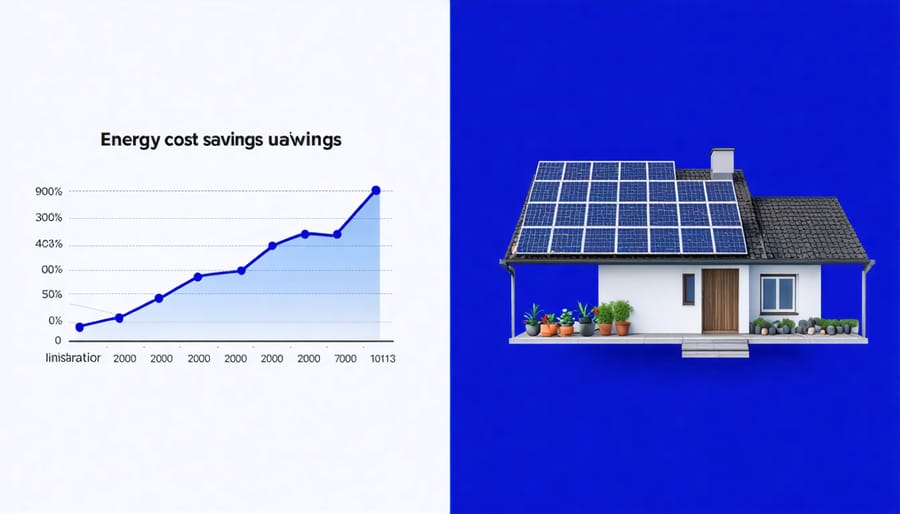
Real-World Applications
Home Integration Examples
Fabric solar cells can seamlessly integrate into your home in numerous creative ways. Window curtains and drapes equipped with this technology can harvest sunlight while maintaining their decorative function. Outdoor awnings and patio covers made with solar fabric provide shade while generating power for your outdoor lighting or charging stations.
Consider replacing traditional deck umbrellas with solar-embedded versions to power small appliances or charge mobile devices while enjoying your outdoor space. Indoor roller blinds featuring fabric solar cells can help regulate room temperature while contributing to your home’s energy production.
For maximum efficiency, solar fabric canopies can be installed over south-facing patios or decks, creating comfortable outdoor living spaces that generate electricity. Even decorative wall hangings and room dividers can incorporate this technology, turning vertical spaces into subtle power generators while maintaining your home’s aesthetic appeal.
These integrations work particularly well in sunrooms, conservatories, and other naturally lit spaces where the fabric can capture optimal sunlight throughout the day.
Future Possibilities
The future of fabric solar cells holds exciting possibilities for homeowners and sustainable living enthusiasts. Researchers are developing “smart curtains” that can power your home while providing shade, and clothing that can charge your mobile devices while you’re on the go. Imagine window treatments that not only enhance your home’s aesthetics but also contribute to your energy independence.
Industry experts predict that within the next five years, we’ll see fabric solar cells integrated into awnings, outdoor furniture covers, and even car upholstery. These innovations could dramatically reduce our reliance on traditional power sources while making solar energy more accessible and aesthetically pleasing.
The technology is also evolving to become more efficient and durable. Scientists are working on fabric solar cells that can maintain their power generation capability even after multiple washing cycles, making them practical for everyday use. As manufacturing costs continue to decrease, these sustainable solutions will become increasingly affordable for the average homeowner.
Making the Switch
Making the switch to fabric solar technology requires careful planning and consideration of several key factors. First, assess your home’s current energy needs and available space for installation. Unlike traditional panels, fabric solar cells offer flexibility in placement, making them ideal for curved surfaces, awnings, or even as window treatments.
Before installation, consult with certified solar installers who specialize in flexible solar technologies. They can evaluate your home’s structure and recommend the most effective placement for maximum energy capture. Consider starting with a smaller installation, such as solar awnings or window coverings, to test the technology’s effectiveness for your specific needs.
When evaluating long-term cost considerations, factor in not just the initial investment but also potential energy savings, maintenance requirements, and product lifespan. Many manufacturers offer warranties ranging from 10 to 20 years, though the technology is still evolving.
Check local building codes and homeowners’ association regulations regarding solar installations. While fabric solar cells are generally less conspicuous than traditional panels, some communities may have specific guidelines about their placement and appearance.
Consider timing your installation during warmer months when weather conditions are optimal. Many homeowners find it beneficial to combine fabric solar installation with other home improvement projects, such as roof repairs or window replacements, to maximize efficiency and reduce overall costs.
Remember to research available tax incentives and renewable energy credits in your area, as these can significantly offset initial installation costs and improve your return on investment.
Fabric solar cells represent an exciting frontier in sustainable home energy solutions. As this technology continues to evolve, homeowners have a unique opportunity to be part of the renewable energy revolution while potentially reducing their electricity costs. The integration of solar-collecting fabrics into everyday items like curtains, awnings, and outdoor furniture could transform how we think about powering our homes.
For those interested in adopting this technology, the best approach is to stay informed and connected with local solar installers who are beginning to work with these innovative materials. While fabric solar cells are still emerging, their potential for seamless integration into home design makes them an attractive option for future-focused homeowners.
Consider starting small by exploring current market offerings and consulting with renewable energy experts about upcoming installations in your area. As the technology becomes more widely available, early adopters will be well-positioned to take advantage of incentives and optimal installation opportunities. Remember that while fabric solar cells may not yet match traditional panels in efficiency, their versatility and aesthetic appeal make them a promising addition to any sustainable home energy strategy.





